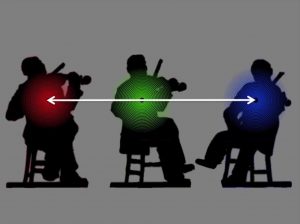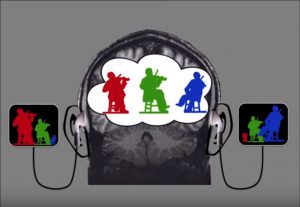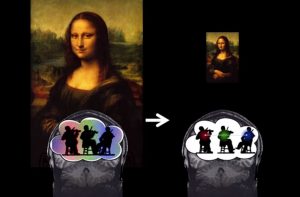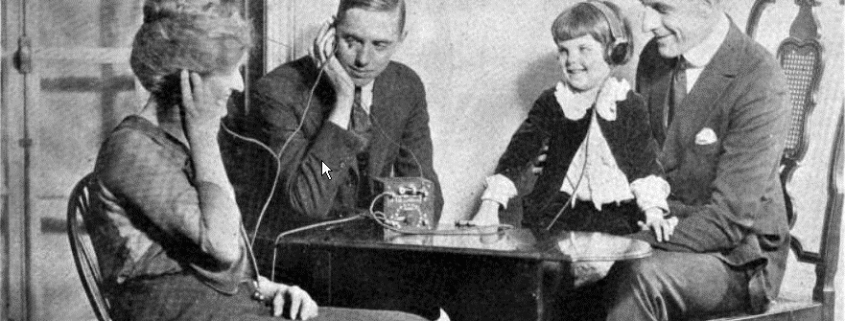Your Brain Hears More Than You Think – Dr. Roger Dumas
Dr. Roger Dumas – Your Brain Hears More Than You Think Blog
To begin with, any stereo recording is a one-dimensional re-creation of humans performing in 3D. In a typical recording session, mics are placed in close proximity to sound sources. During the mixing stage, these monophonic signals are amplified differently on the left and right. When you listen through earbuds, you defeat your head-related transfer function. Consequently, your brain forms an impression of sound sources placed at various points along a line inside your head between your ears.

With headphones on, the sonic model breaks down; you’re not even getting two dimensions out of three!

What you hear is one-dimensional, but the original performance in 3D includes reflections and resonances off the floors and walls, every surface, including the performers and their instruments, like this:

Ok, so, sonic nuances can’t be captured in the recording process, so what?
Enter: lossy compression
Without it, you couldn’t easily carry around thousands of tunes or download them from the cloud. Mp3’s use “perceptual coding” to compress the data to make the most efficient use of bandwidth when streaming. It takes CD-quality music and removes the details it doesn’t think you can hear. We appreciate the original but we struggle with the crude copy. Essentially, lossy compression is to music what pixilation is to art. A jpeg at 72 dots-per-inch might look okay on your phone, but not on your laptop. Ready, set, metaphor:

So, just don’t compress your audio and that fixes the problem, right?
If only. Even with uncompressed audio, you’re still left without crucial sub-audible cues live performances convey. Without these cues, your brain has to work much harder to process audio. Unfortunately, lossy compression, coupled with the inaccuracies of stereophonic recordings, has detrimentally altered the listening experience in the 21st century. The audio is hyper-accessible, but does that matter if the average music listener is only hearing a fraction of the original performance? As illustrated above, you’re still not getting the full picture even with hi-res audio. Our brains are literally, or rather musically, starving for information. So what’s the fix? How do we get what’s been lost BACK into audio? One answer is sub-audible supplementation…(continued in our next blog post)
Adapted from Dr. Roger Dumas’ TedX Talk. Click here to view

